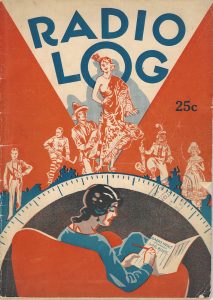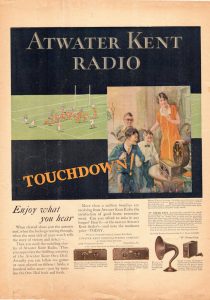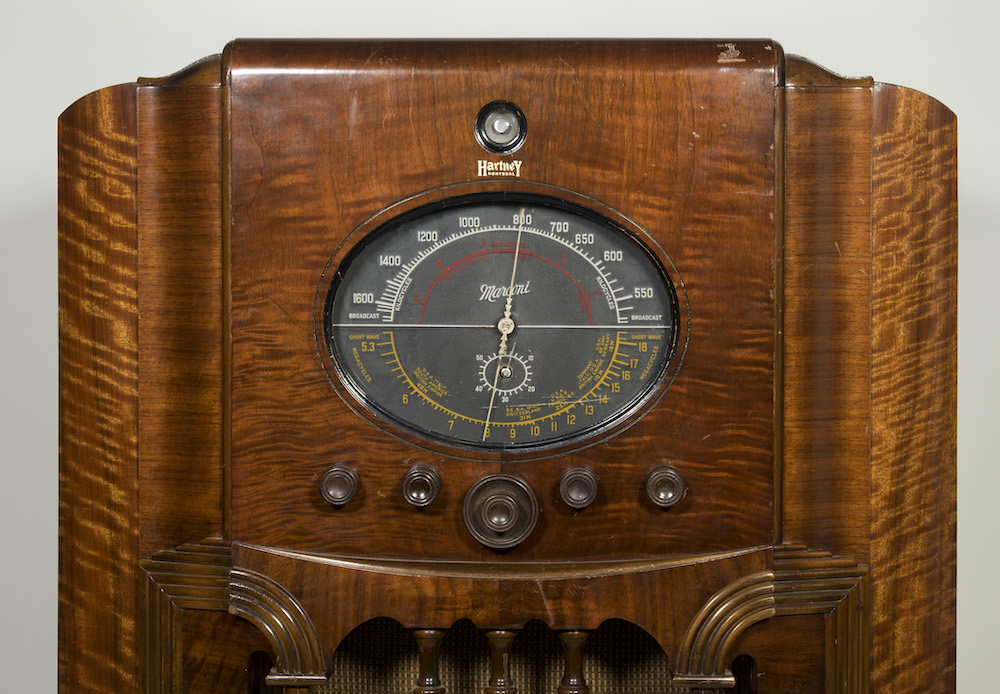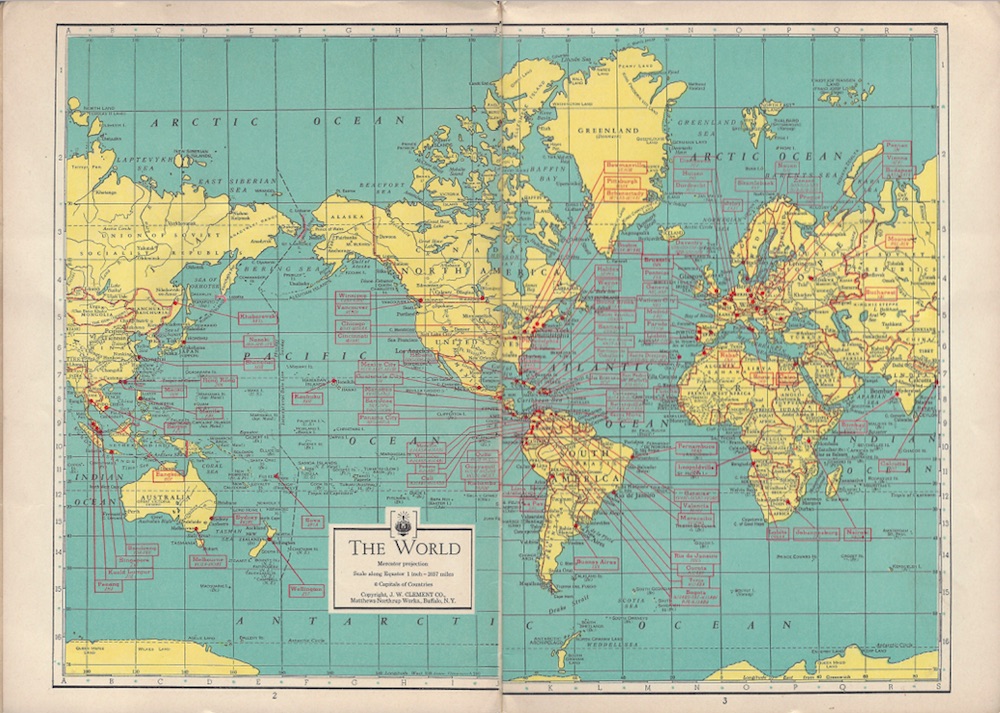Virtual Travel
In the 1930s, receiving shortwave signals became a feature of many floor consoles and some tabletop models. Listeners could tune in to shortwave signals from international destinations, along with the standard (AM) and emergency or police bands.
Radio allowed people to connect with other places. Early on, a hobby called DXing developed. The name comes from DX – the telegraphic shorthand for “distance” or “distant.” Radio listeners would simply try to pick up signals from far away stations. DXers kept a radio log and mailed reception reports to distant stations. In return, they would receive cards called QSL cards, confirming what they heard. DXers treated QSL cards like postcards, collecting them from all over the world and marking station locations on a map.
One of radio’s great powers was the ability to provide listeners access to other places and events as they happened. Listeners could hear the King’s annual Christmas address from England. They could also attend concerts, boxing matches, or baseball, football, or hockey games. All this without leaving their homes.
Designers imagined radios to be like ocean liners or airplanes. Listeners could travel effortlessly across the globe and take in different cultures and experiences. Some manufacturers caught on to this idea. They even produced radio maps and atlases to help listeners visualize their virtual travels.
The 1930s was a time of heightened political tensions. A global depression began to unfold, and war was on the horizon. Being able to escape from or connect to distant lands and cultures never seemed so crucial.





